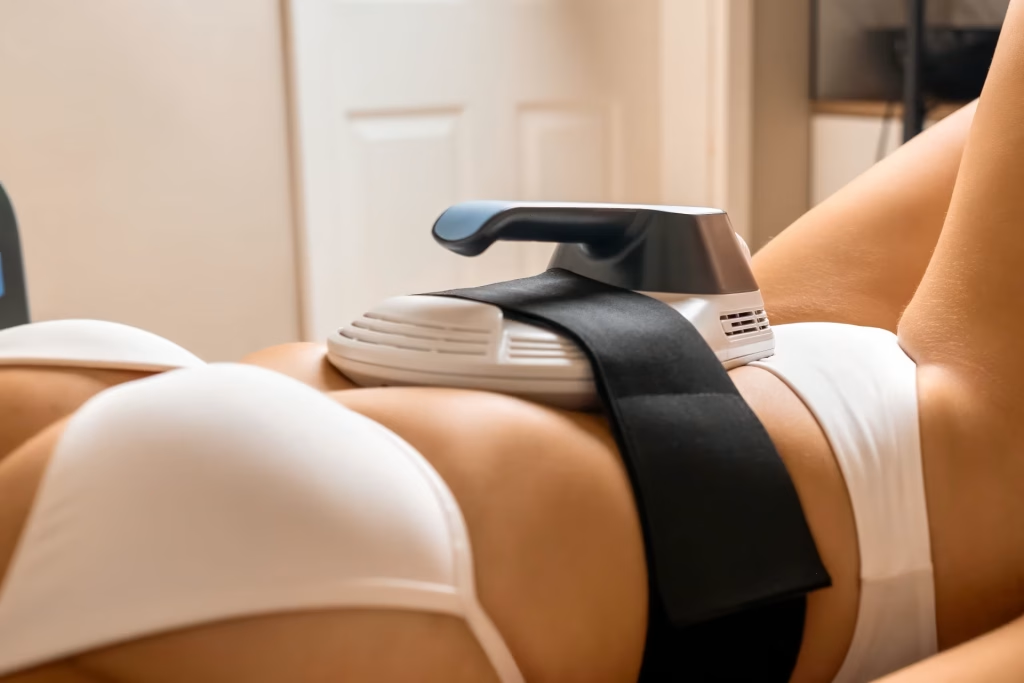Body contouring has gained popularity as people seek ways to improve their appearance and boost their confidence. However, with its rise, a mix of facts and myths has emerged, leaving many confused. In this blog, we’ll delve into the truth about body contouring and debunk the common myths.

What is Body Contouring?
Body contouring refers to various procedures intended to reshape and enhance the body’s appearance. It includes both surgical and non-surgical techniques designed to target specific areas like the abdomen, hips, and thighs. This transformative process is appealing to those at or near their ideal weight, seeking to address stubborn pockets of fat or loose skin that don’t respond to traditional weight loss methods.
Non-surgical options such as CoolSculpting utilize advanced technologies like freezing to destroy fat cells without harming the skin. Meanwhile, surgical methods like liposuction and tummy tucks are more invasive but offer more dramatic results for shaping and redefining the physique. Technological advancements continue to offer safer, less invasive procedures, providing more choices based on individual needs and desired outcomes.
Body contouring is not synonymous with weight loss. Rather, it enhances the body’s natural silhouette, complementing efforts made through diet and exercise. Whether slimming down thighs or tightening abdominal skin post-pregnancy, these procedures refine body contours, creating a more toned and aesthetically pleasing silhouette. However, understanding what contouring can achieve is key to realistic expectations. This customization ensures that the treatment aligns with personal goals.
Common Myths About Body Contouring
Despite its popularity, many myths surround body contouring. Some believe it’s a weight loss solution or that results are instantaneous. Others think it’s only for women. Let’s break down these misconceptions.
The notion that body contouring is a magic wand for weight loss is one of the most common myths. The reality is that it’s designed as an enhancement method after achieving weight goals through conventional means. According to insights from the Florida Center for Plastic and Cosmetic Surgery, body contouring should ideally be pursued after stabilizing at a preferred weight, helping to refine rather than drastically reshape the body.
Immediate results are another misconception. Most procedures, especially non-invasive ones, gradually manifest results over weeks or months as the body naturally metabolizes treated cells. Patience combined with continuous healthy living drastically improves outcomes, aligning reality with expectations.
Contrary to belief, body contouring’s benefits are not gender-specific. While historically popular among women, a significant uptick in men seeking such treatments has surfaced, aiming for greater body confidence and definition.Gender inclusivity in these treatments reaffirms their universal applicability and effectiveness.
The Truth about Body Contouring Procedures
Body contouring is not a substitute for weight loss; it’s best suited for individuals who are already near their ideal weight. Additionally, while some immediate change can be seen post-surgery, full results take time to manifest.
Each body contouring technique targets different aspects of body transformation, utilizing varied technologies to achieve tailored results. For instance, procedures like laser lipolysis might offer results in terms of fat removal, but not skin tightening, requiring possible complementary techniques.
The endurance of body contouring results largely depends on maintaining a stable weight through proper diet and exercise habits. Ignoring lifestyle adjustments can jeopardize the longevity of achieved results.Prolonged results are feasible and often reported by those who integrate these into their post-operative routines.
As promising as these procedures may sound, decisions around pursuing body contouring should only occur after in-depth discussions with professionals. Understanding individual capabilities, potential risks, and aligning them with realistic goals become pivotal in ensuring a satisfactory experience with body contouring.
Who Can Benefit from Body Contouring?
Body contouring can benefit anyone looking to enhance their body shape after major weight loss or pregnancy. Both men and women seek these procedures to help achieve their desired look.
The ideal candidates for body contouring are those who are healthy, non-smokers, and have realistic expectations about what the procedure can achieve. According to experts in the field, being at a stable weight and understanding the maintenance required post-procedure is paramount to achieving optimal outcomes.
Whether addressing the loose skin that often follows substantial weight loss or striving for muscle definition that exercise alone couldn’t achieve, body contouring presents an array of options to complement personal fitness efforts. Moreover, societal barriers for gender are dissolving, with increasing numbers of men seeking similar solutions for aesthetic enhancement.
How to Choose the Right Body Contouring Procedure
Choosing the right procedure involves consulting with a certified professional who can recommend options based on individual goals and health. Understanding each method’s benefits and risks is crucial to making an informed choice.
Consulting with a qualified aesthetician can help tailor treatments to address personal concerns, whether they involve removing stubborn fat or acquiring tighter skin. This strategic alignment ensures that the procedure matches personal ambitions and anatomical realities.
It is vital to fully comprehend the procedural options available within the spectrum of body contouring, from non-invasive to surgical solutions, as well as anticipated outcomes. Knowing the parameters of each option allows individuals to navigate their path with clarity and confidence.
Separating Fact from Fiction in Body Contouring
Understanding body contouring involves distinguishing fact from fiction. By dispelling myths and focusing on the reality of these procedures, individuals can make informed decisions about whether body contouring is right for them. Remember, consulting with a qualified professional is imperative to ensuring safe and effective results.


